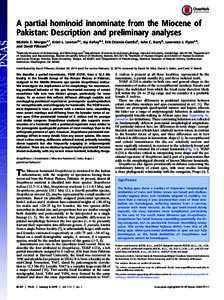<--- Back to Details
| First Page | Document Content | |
|---|---|---|
 Date: 2015-01-06 13:44:22Hip bone Ilium Proconsul Oreopithecus Ischium Acetabulum Hip Ape Dryopithecus Pelvis Proconsul nyanzae Sivapithecus |
Add to Reading List |
| First Page | Document Content | |
|---|---|---|
 Date: 2015-01-06 13:44:22Hip bone Ilium Proconsul Oreopithecus Ischium Acetabulum Hip Ape Dryopithecus Pelvis Proconsul nyanzae Sivapithecus |
Add to Reading List |